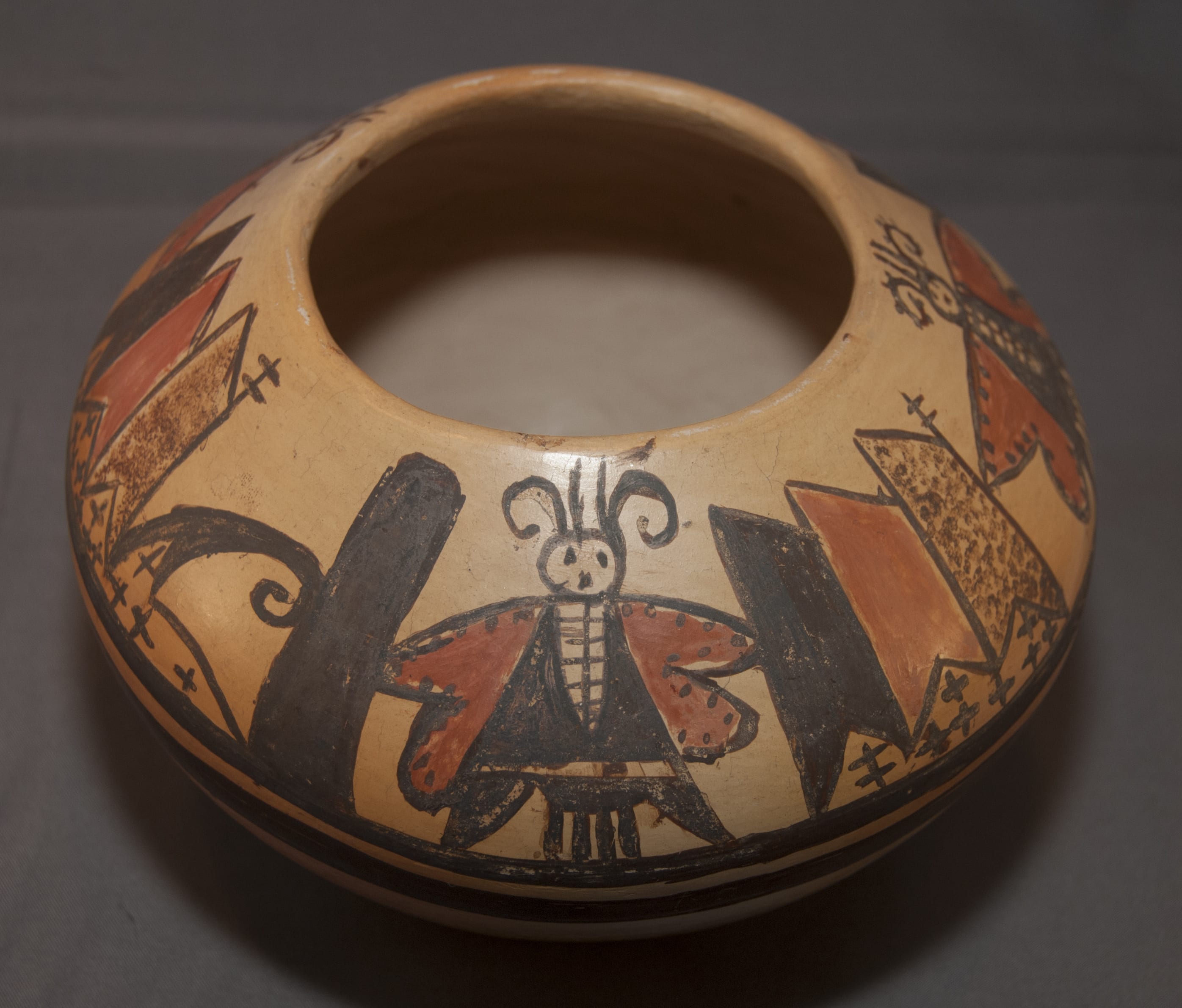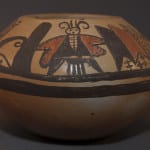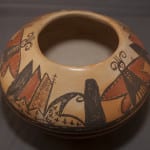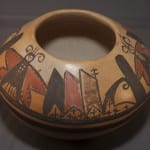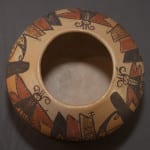This is the “classic” Grace Chapella design for which she is best known. Rick Dillingham features her family (and therefore this butterfly design) in his Fourteen Families book (1994, 2-13). As noted in the description for pot 2010-22 (a Grace pot with a similar design), Mark Tahbo offered an explanation for this motif:
“The two pointed elements on bowl 2010-22 represent the Hopi mesas. The crosshatched wave image represents cornfields surrounded by water, the butterflies the burst of life after spring rains. The vertical lines with cross hatchings represent prayer feathers (pathos) suspended from a string (nakwakwoci), the typical prayer offerings for rain at Hopi…The design is siitalpuva, a land brightened with flowers: Hopi heaven on earth.”
Pot 2011-19 is not as carefully painted as pot 2010-22, but the additional roughness has an amusing charm. Though she must have made dozens if not hundreds of pots with this design in her 106 years (1874-1980), Grace miscalculated her spacing on pot 2011-19. There are three butterflies on the pot. Each is followed by black, red and stippled mesa images above small “x” marks that probably represent fields. Following two of the butterflies, there is the representation of a wave of water, then a solid phallic-like image painted black. These elements are missing from the third butterfly, presumably because Grace painted this section last and ran out of room. Such a “mistake” would never happen to the more precise and studied young potters currently using this design. For me, this irregularity certifies the pot as pure folk art and humanizes the process of pot production. I love it.
(For more information on Grace, her life and career, see her other entries in the Index of Artists.)

